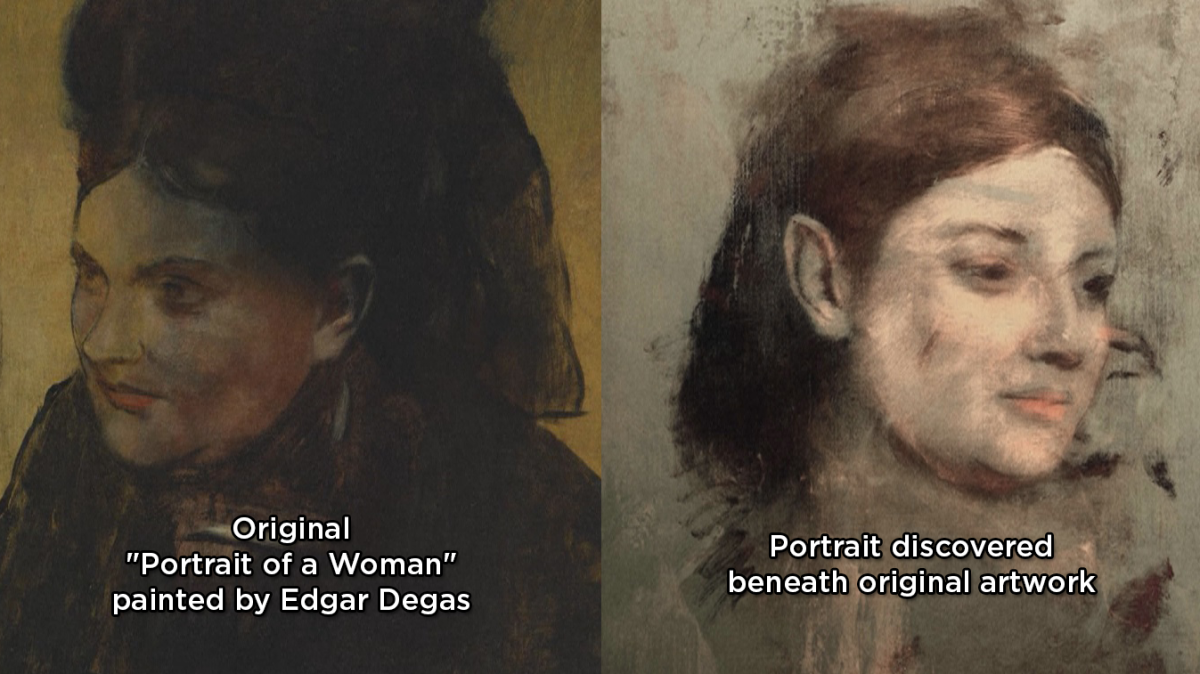A powerful X-ray technique has unveiled a hidden portrait beneath a famed painting by French impressionist artist Edgar Degas, helping to solve a mystery that has stumped the art world for decades.

An article published this week in the online journal Scientific Reports reveals that the long-puzzled-over image concealed behind Degas’ “Portrait of a Woman” is, in fact, a portrait of another woman.
READ MORE: Janitor nearly removes Banksy mural left for British school kids
Australian researchers believe she is Emma Dobigny – one of the painter’s favourite models.
For nearly a century, experts have known that Degas painted the famed portrait over another image sometime between 1876 and 1880.
As the painting aged, the faint outline of what appeared to be another woman began leaking through the top layers of paint.
READ MORE: Lawren Harris paintings fetch over $3 million at auction in Vancouver
Staff at the National Gallery of Victoria in Melbourne, where the portrait is housed, wanted to see what was hidden underneath, but traditional X-ray techniques and infrared photography weren’t powerful enough to reveal any detail.
So the gallery teamed up with scientists from Australian Synchrotron, who spent 33 hours painstakingly scanning the painting with a high-definition X-ray beam produced by a particle accelerator called a synchrotron.
Synchrotrons accelerate electrons to high speeds, creating a source of light a million times brighter than the sun.
The technique was so successful that the scientists could not only see the details of the entire hidden image, but its evolution.
Degas appears to have originally given the woman pixie-like ears, but later reworked them to a more conventional shape.
The quality of the results stunned the scientists.



Comments